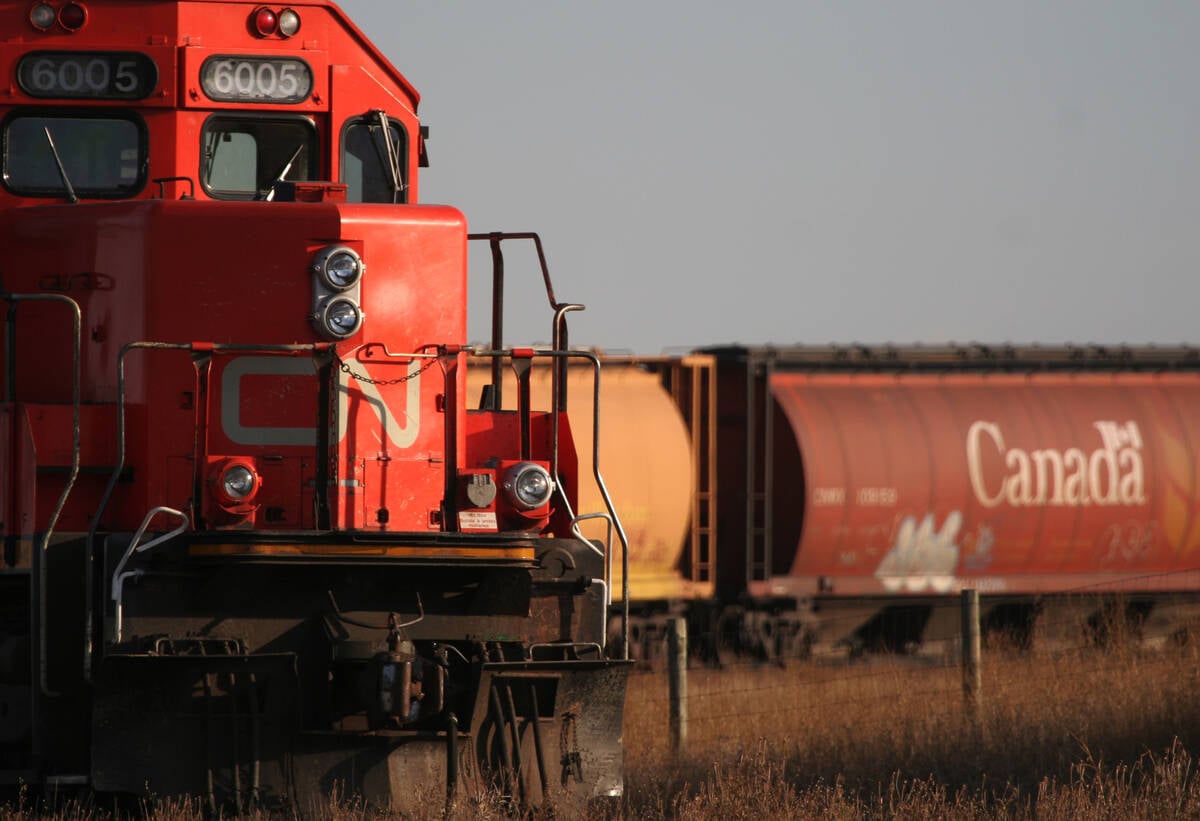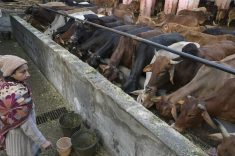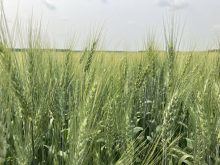Loonie helps fed prices
The cattle market enjoyed some relief last week as the loonie backed down. Prices climbed as the dollar dropped, said Canfax.
Steers traded from $74.62-$78 per hundredweight live and $126.50-$127.50 on the rail for a weekly average price of $76.39, up $4.32 from the week before.
Heifers were $76.55-$78 per cwt. live and $126.50-$127.30 on the rail with a weekly average price of $76.55, up $4.60.
Alberta packers showed more interest than they have for some weeks. U.S. interest seemed to be higher as well, given the weaker loonie and the tightening fed supplies south of the border.
Read Also

Canada-U.S. trade relationship called complex
Trade issues existed long before U.S. president Donald Trump and his on-again, off-again tariffs came along, said panelists at a policy summit last month.
Trade volume was near 19,000 head.
Fed cattle exports two weeks ago totalled 22,553 head, bringing the year to date to 682,484 head.
Given basis levels, weekly export volumes are expected to remain around the 20,000 head per week for the near term and possibly longer, said Canfax.
Overall fundamentals of supply and demand are expected to be fairly static for the next two weeks.
Strong demand from U.S. packers is expected as they enter a period of tightening supplies, which may support prices here, said Canfax.
Feeders edge higher
Feeder volumes declined and prices were steady to slightly higher thanks to the lower Canadian dollar.
Sale volumes totalled 58,356 head, down nine percent from the week before and nine percent lower than last year, said Canfax.
Steers 300-400 pounds were steady while 400-600 lb. saw gains of $2.75-$3 per cwt. Steers 700-900 lb. and heavier were $1 higher.
Heifer calves 300-600 lb. rose $1.50-$2 while heavier heifers moved up slightly.
Feeder exports to the U.S. fell three percent to 14,726 head.
Slaughter cows were steady while butcher bulls gained 10 cents per cwt., pushing bull prices 12 percent higher than the same time last year.
If the loonie is steady or lower this week, feeder prices should be steady to slightly higher.
Buyer interest may increase due to reasonable backgrounder break-evens on heifer calves and 600 lb. and heavier steers, said Canfax. Finishing lots will be sharpening their pencils to try to procure feeder cattle to top up inventories.
U.S. feedlot inventories are low, which may add additional American buyer interest.
The slaughter cow market should be stable with butcher bull prices steady to slightly higher, said Canfax.
Estimated non-fed slaughter numbers are expected to be steady for the next two weeks.
As more bred cows go to market, the price spread based on quality and age will widen. At current prices bred cow auction volumes may tighten until demand increases, Canfax said.
Beef prices climb
U.S. cutouts rose in response to a slower slaughter pace.
On Nov. 15, the Choice cutout was $144, up $4. Select climbed to $132.95, up $4.32.
Cut-out values will be affected by the size of the weekly kill and whether demand can increase through the coming holiday season.
Canadian packers should see some relief from U.S. imports due to the setback in the Canadian dollar.
The Calgary wholesale market for delivery this week was $1 higher at $132-$133.
More U.S. cattle go on feed
The U.S. Department of Agriculture cattle-on-feed report Nov. 16 reported a lighter-than-expected October marketing pace and continued placements of heavier cattle into feedlots.
The report was expected to weigh on futures prices.
October marketings were 106 percent of last year compared to expectations of 107 percent.
October placements were 112 percent of a year ago, or 2.716 million head. That lifted Nov. 1 on-feed supply to 11.760 million head, or 98 percent of last year.
Dry southern plains wheat pastures likely pushed cattle into feedlots.
Hogs steady
U.S. hogs are gaining weight quickly and going to market sooner than expected. The abundant supply of market-ready hogs and good operating margins kept the slaughter pace strong.
But there was market talk that packers were having trouble selling all the pork produced. The U.S. Thanksgiving holiday Nov. 22 should reduce slaughter this week.
In Canada, the weaker loonie helped prices.
Iowa-southern Minnesota cash hogs traded at $35.50 US per cwt. Nov. 16, steady with Nov. 9.
The U.S. composite pork carcass cut-out value closed at $58.05 Nov. 16, down from $59.37 Nov. 9.
U.S. slaughter for the week was estimated at 2.362 million, compared to 2.367 million the week before and 2.14 million a year ago.
Bison report
The Canadian Bison Association report was not available.
Agriculture Canada reports that to the end of October, 15,383 bison had been slaughtered federally in Canada, an increase of 12 percent over last year at the same point. Provincial slaughter was 4,273, an increase of five percent.
In the same period, 14,559 head were exported to the United States, an increase of 40 percent.
Sheep steady
There was no sale Nov. 12 at Beaver Hill Auction in Tofield, Alta.
Ontario Stockyards reported 1,908 sheep and lambs and 134 goats traded last week. Lambs, sheep and goats sold steady.














